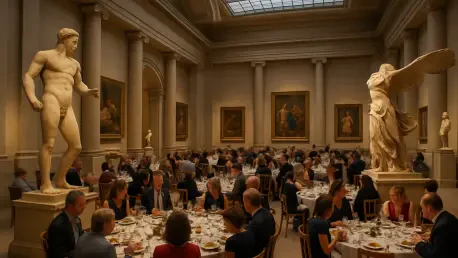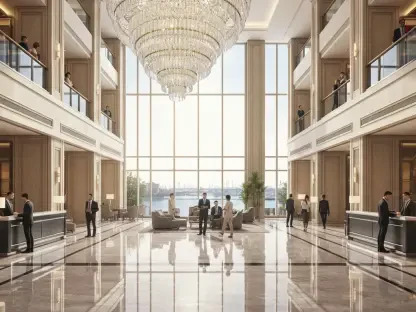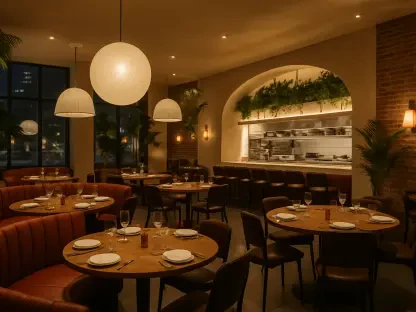I’m thrilled to sit down with Katarina Railko, a seasoned expert in hospitality with a rich background in travel and tourism. Katarina has honed her skills in creating memorable experiences and is a prominent voice in entertainment and events, often shaping discussions at expos and conferences. Today, we’re diving into her insights on a groundbreaking partnership between two celebrated New York chefs and one of the city’s most iconic cultural institutions, the Metropolitan Museum of Art. We’ll explore how this collaboration aims to transform the museum’s dining landscape, blending culinary artistry with cultural heritage, and what it means for the millions of visitors who pass through The Met’s doors each year.
How do you see the partnership between renowned chefs and a cultural giant like The Met redefining the museum dining experience?
I think this collaboration is a game-changer. Museums have long been places of inspiration, but dining often takes a backseat to the art. When you bring in chefs with a reputation for creating soulful, approachable food, it elevates the entire visitor experience. It’s about weaving together food and culture in a way that feels seamless—think of enjoying a beautifully crafted dish after wandering through galleries of timeless art. This partnership signals that dining can be as much a part of the museum’s story as the exhibits, making every visit a multi-sensory journey.
What excites you most about the idea of bringing a signature West Village dining vibe into such a grand, historic space?
What really gets me excited is the contrast and the challenge of it all. The West Village is known for its intimate, cozy spots where you feel like you’re in someone’s home. Translating that warmth into a space as vast and awe-inspiring as The Met is no small feat. I’m intrigued by how they’ll balance that casual charm with the museum’s inherent grandeur. It’s like pairing a rustic, hearty dish with a fine wine—there’s potential for something truly harmonious if done right.
How do you think iconic dishes, like a much-loved lasagna, could play a role in connecting museum-goers to this new dining vision?
Food has this incredible power to evoke emotion and memory, and iconic dishes like lasagna can be a bridge between the familiar and the extraordinary. Imagine walking through centuries of art and then sitting down to a plate that feels like a warm hug—it grounds you. I think including beloved recipes can make the dining experience more accessible, especially for visitors who might feel intimidated by the museum’s scale. It’s a way to say, ‘This is for everyone,’ while still showcasing culinary excellence.
With the project unfolding over several years and starting with major renovations, what do you anticipate as the biggest challenges in this early phase?
The early phase is always about laying a strong foundation, and with a project of this magnitude, logistics will be a huge hurdle. Renovating spaces like the entrance at 83rd Street and Fifth Avenue while maintaining the museum’s operations is a delicate dance. There’s also the challenge of aligning the design of these new dining areas with both the chefs’ vision and The Met’s aesthetic. It’s about creating spaces that feel integrated, not like an afterthought, and that requires meticulous planning and collaboration across teams.
Since the dining program will include both quick cafés and full-service restaurants, how do you envision these spaces meeting the needs of different types of visitors?
I see the cafés as a haven for those on a tight schedule—tourists popping in for a quick coffee or a light bite between exhibits. They’ll likely focus on convenience without sacrificing quality, offering grab-and-go options with a touch of flair. The full-service restaurants, on the other hand, will cater to visitors who want to linger, perhaps over a leisurely lunch or dinner after a deep dive into the galleries. These spaces can offer a more immersive experience, with menus that reflect the thoughtfulness of the museum itself, turning a meal into a moment of reflection.
Given The Met’s massive annual visitor count, how can a hospitality approach ensure both quality and inclusivity on such a large scale?
Handling six million visitors a year is a staggering task, and it starts with understanding diversity in taste and culture. Menus will need to speak to a global audience—think options that cater to different dietary needs and palates, from classic comfort foods to lighter, international flavors. But quality can’t slip, so streamlined operations and well-trained staff are key. It’s also about creating a sense of welcome, ensuring every guest, whether a local or an international traveler, feels the hospitality. Consistency at this scale is tough, but with the right systems, it’s achievable.
From your expertise in events and hospitality, how do you think partnerships like this one influence broader trends in cultural institutions?
Partnerships like this set a new benchmark for cultural institutions. They show that museums and galleries aren’t just about preserving the past—they can be vibrant, living spaces that engage with contemporary life through food, design, and experience. I think we’ll see more institutions partnering with top talent in hospitality and culinary arts to redefine what a visit means. It’s a trend toward experiential culture, where every touchpoint, from the art to the meal, is curated to leave a lasting impression. This could inspire similar collaborations across the country and beyond.
What is your forecast for the future of dining in cultural spaces like museums over the next decade?
I believe we’re heading toward a future where dining in cultural spaces becomes as celebrated as the art or history on display. Over the next decade, I expect museums to invest more in culinary partnerships, turning their cafés and restaurants into destinations in their own right. We’ll see menus inspired by exhibits, seasonal offerings tied to cultural events, and spaces designed to encourage connection and conversation. Technology might play a role too, with apps for pre-ordering or storytelling about the food’s origins. Ultimately, it’s about making cultural spaces more holistic—places where you feed both your mind and your body.









